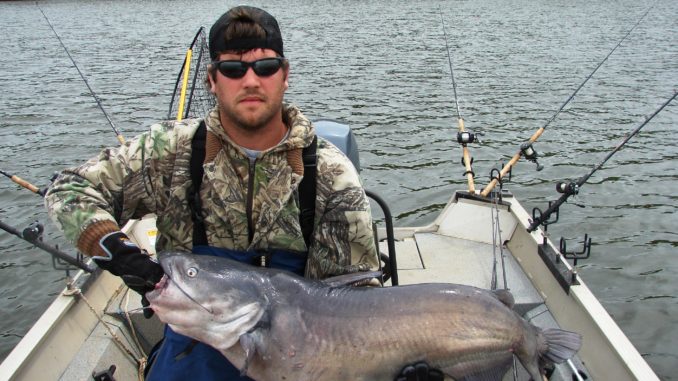
Badin Lake is part of the Yadkin River system that was formed by impounding sections of the river to support an aluminum-smelting plant in the town of Badin operated by Alcoa. Badin is downstream of High Rock and Tuckertown lakes and upstream of tiny Falls Lake and Lake Tillery, where the Uwharrie River joins the Yadkin to form the Pee Dee River before it flows through Blewett Falls Lake and into South Carolina on its way to the Atlantic Ocean. Badin Dam was completed and the lake impounded in 1917.
Badin covers approximately 5,350 acres and has 115 miles of shoreline. Much of its eastern shoreline in the Uwharrie National Forest. The lake reaches 190 feet at its deepest point, and the water temperature varies from approximately 40 degrees at its lowest during winter to a high around 85 degrees in summer.
Badin is home to a number of species: largemouth bass, smallmouth bass, spotted bass, white bass, striped bass, blue catfish, flathead catfish, channel catfish, white perch, crappie, bream and even a few walleye.
The history of the development of the Yadkin River and Badin Lake dates to the late 1800s. The river flowed through a deep gorge called the Narrows for 3.5 miles, and industrialists recognized an opportunity. The first attempt to dam the river to produce power ended in 1907 when the Whitney Development Company abandoned the nearly completed Whitney Dam and diversion canal. The canal remains and the dam is under water, a quarter-mile upstream from the Old Whitney ramp and below Tuckertown Dam, which was built in 1962.



